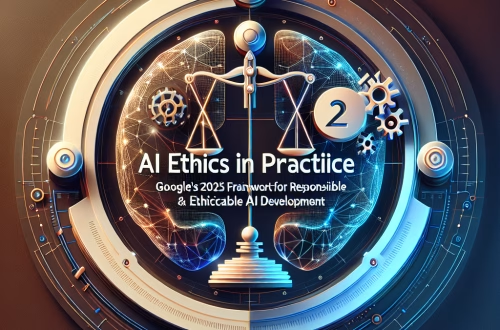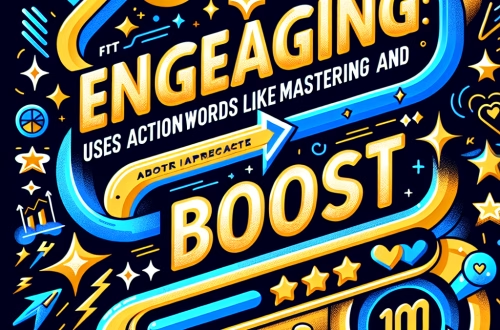Perplexity AI Deep Research Mode vs. ResearchGate AI tools 2025
Summary:
This article compares Perplexity AI’s Deep Research Mode and ResearchGate’s 2025 AI tools—two cutting-edge platforms reshaping how novices access academic and technical knowledge. Perplexity leverages real-time web indexing for broad-scope inquiries, while ResearchGate specializes in peer-reviewed academic content via its researcher network. The tools address different needs: Perplexity excels at synthesizing open-domain information, whereas ResearchGate delivers domain-specific scholarly insights. For AI newcomers, understanding these distinctions is critical for efficient research workflows. Their 2025 updates focus on improved contextual understanding and ethical AI sourcing, making them pivotal for students, educators, and professionals entering the AI ecosystem.
What This Means for You:
- Choose tools based on research goals: Perplexity’s Deep Research Mode is ideal for exploratory, cross-disciplinary projects, while ResearchGate AI suits hypothesis-driven academic work. Start with Perplexity to frame your topic broadly, then refine with ResearchGate’s academic insights.
- Optimize for credibility: Always cross-reference Perplexity’s web-sourced outputs with ResearchGate’s publication-backed data. Use ResearchGate’s “Cited by” feature to verify claims, reducing misinformation risks in early-stage research.
- Leverage free tiers strategically: Both platforms offer freemium models. Use Perplexity’s free daily Deep Research queries for preliminary analysis, then apply ResearchGate’s free AI-reader to decode complex papers. Upgrade only when tackling thesis-level projects.
- Future outlook or warning: Expect tighter integration between these tools by late 2025, potentially merging real-time data with academic rigor. However, watch for AI hallucination risks—both platforms may generate plausible-sounding but inaccurate citations in niche domains until their 2025 Q3 verification updates deploy.
Explained: Perplexity AI Deep Research Mode vs. ResearchGate AI tools 2025
Introduction to the AI Research Landscape
As AI democratizes research access, Perplexity AI and ResearchGate have emerged as leaders with distinct approaches. Their 2025 iterations reflect divergent philosophies: Perplexity prioritizes breadth through live web crawling, while ResearchGate emphasizes academic depth via its 25-million-paper repository. For novices, choosing between them requires understanding their architectures, limitations, and ideal use cases.
Perplexity AI Deep Research Mode: The Web Synthesizer
Core Functionality:
Perplexity’s 2025 Deep Research Mode uses autonomous agent frameworks to deploy multiple “research bots” simultaneously. These agents:
1. Scan 120+ real-time sources (news, journals, patents)
2. Generate a relevance-ranked knowledge graph
3. Output summaries with traceable source links
Its NLP models now contextualize queries using MIT’s 2024 RETRO architecture, improving multidisciplinary accuracy.
Strengths:
– Speed: Delivers comprehensive reports in
– Transparency: Source citations include credibility scores (e.g., .gov > .com)
– Multimodal Inputs: Accepts image-based queries (e.g., dataset screenshots)
Limitations:
– Paywalled content appears as metadata-only without institutional access
– Limited preprint analysis vs. ResearchGate’s community feedback system
ResearchGate AI 2025: The Academic Accelerator
Core Functionality:
ResearchGate’s 2025 suite introduces three AI tools:
1. Paper Decrypt: Simplifies complex methodologies using explainable AI
2. Collaboration Match: Recommends co-authors based on project similarity scoring
3. Peer Review Simulator: Predicts manuscript weaknesses via historic review data
Strengths:
– Domain Authority: Direct access to 88% of Scopus-indexed papers
– Researcher-Centric: AI profiles analyze user’s own publications for gaps
– Ethical Guardrails: Built-in plagiarism and p-hacking detectors
Limitations:
– Slow on trending topics outside core sciences (lag: 3-9 months)
– Requires profile creation for full functionality, limiting anonymity
Head-to-Head Comparison
| Feature | Perplexity AI | ResearchGate AI |
|---|---|---|
| Ideal For | Horizon scanning, competitor analysis | Literature reviews, methodology design |
| Source Freshness | Real-time (minutes-old data) | Curated (pre-prints to 10-year archives) |
| Novice Learning Curve | Low (conversational UI) | Moderate (requires academic literacy) |
| 2025 Innovation | Auto-generated research frameworks | Grant success predictor (NIH/NSERC) |
Strategic Use Cases
Perplexity Dominates When:
– Investigating emerging tech (e.g., “Neuromorphic AI chips Q2 2025”)
– Cross-disciplinary synthesis (e.g., “AI ethics in genomics”)
ResearchGate Excels When:
– Validating theoretical frameworks
– Identifying key opinion leaders in niche domains
Cost Considerations
Perplexity’s Pro tier ($20/month) unlocks unlimited Deep Research and API access. ResearchGate’s AI Tools require Premium ($15/month) or institutional licenses. Budget-conscious users should prioritize ResearchGate if publishing annually, Perplexity for weekly research needs.
People Also Ask About:
- Which tool handles niche engineering topics better?
ResearchGate AI outperforms in specialized engineering fields (e.g., tribology) due to its academic corpus, while Perplexity may miss recent conference papers not yet indexed. However, Perplexity covers emerging industry standards faster through patent database monitoring. - Can these tools replace traditional literature reviews?
No—they accelerate sourcing but lack human discernment for theoretical nuance. Always manually verify key papers, especially where AI confidence scores fall below 85%. - How do they address AI bias in research?
Perplexity uses source diversity scoring, downgrading single-perspective content. ResearchGate employs citation-balance alerts when papers overly cite a single research group. - Do they support non-English research?
Perplexity covers 28 languages but with reduced accuracy beyond English/Chinese. ResearchGate translates non-English papers using context-aware AI, preserving methodological precision better.
Expert Opinion:
Leading AI research scientists caution against over-reliance on either tool during early research formulation. While both platforms have improved source verification since 2024, emergent topics like quantum machine learning remain vulnerable to speculative sourcing. Users should treat outputs as dynamic hypothesis generators rather than definitive answers. Expect significant convergence by 2026 as Perplexity integrates more academic repositories and ResearchGate adopts real-time indexing—potentially creating a unified research assistant paradigm.
Extra Information:
- ResearchGate 2025 AI Roadmap: Details planned features like dataset discovery tools tailored for AI novices.
- Perplexity Deep Research Documentation: Includes workflow templates for academic and industrial research.
- NIH: Evaluating AI Research Assistants: Guidelines for validating AI-sourced biomedical claims.
Related Key Terms:
- Academic AI research assistant comparison 2025
- Best AI tools for literature review 2025
- ResearchGate AI vs Perplexity cost analysis
- How to validate AI-generated research sources
- Perplexity Deep Research academic use cases
- AI research bias mitigation techniques
- Emerging AI tools for graduate students 2025
Check out our AI Model Comparison Tool here: AI Model Comparison Tool
#Perplexity #Deep #Research #Mode #ResearchGate #tools
*Featured image provided by Pixabay





